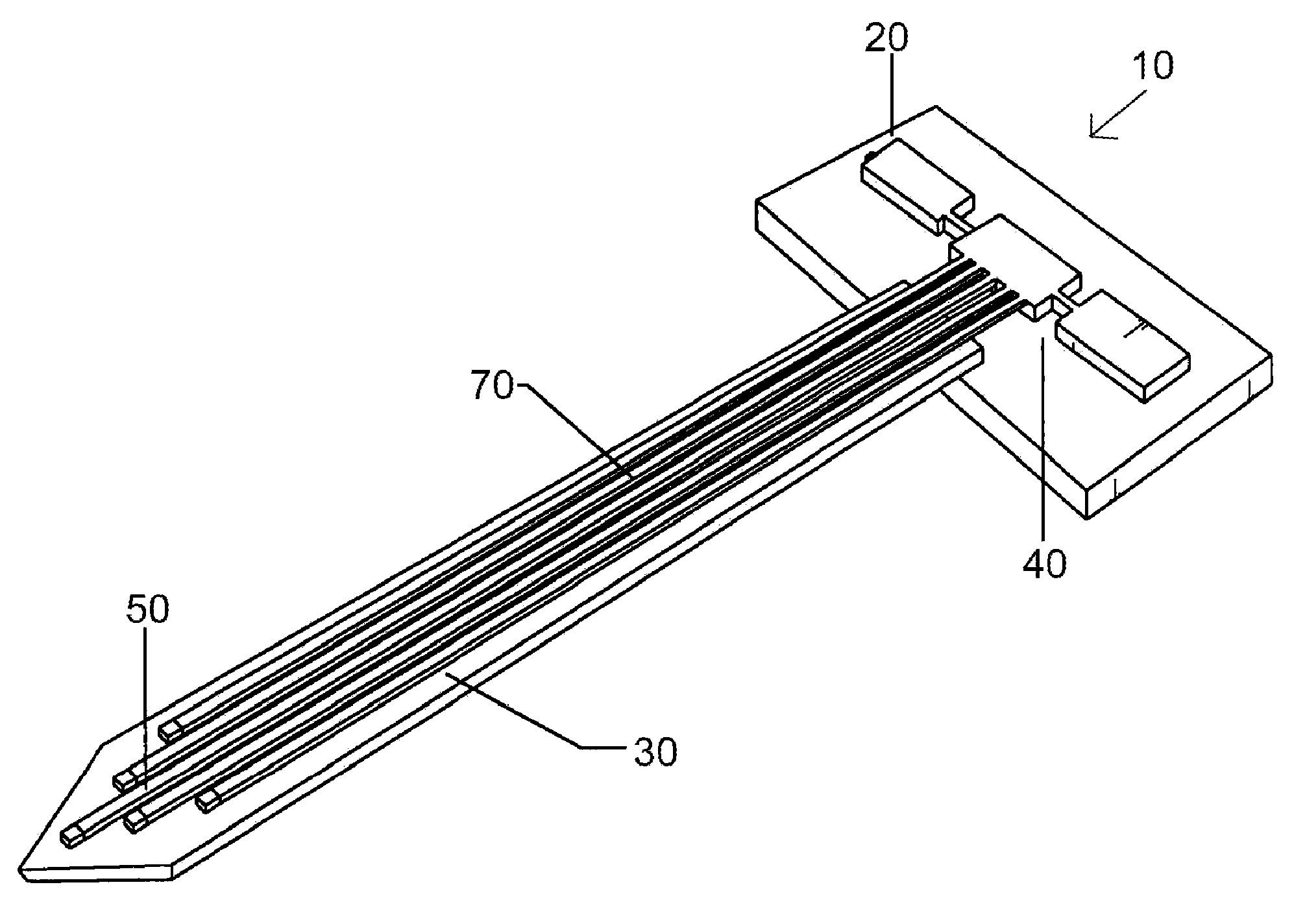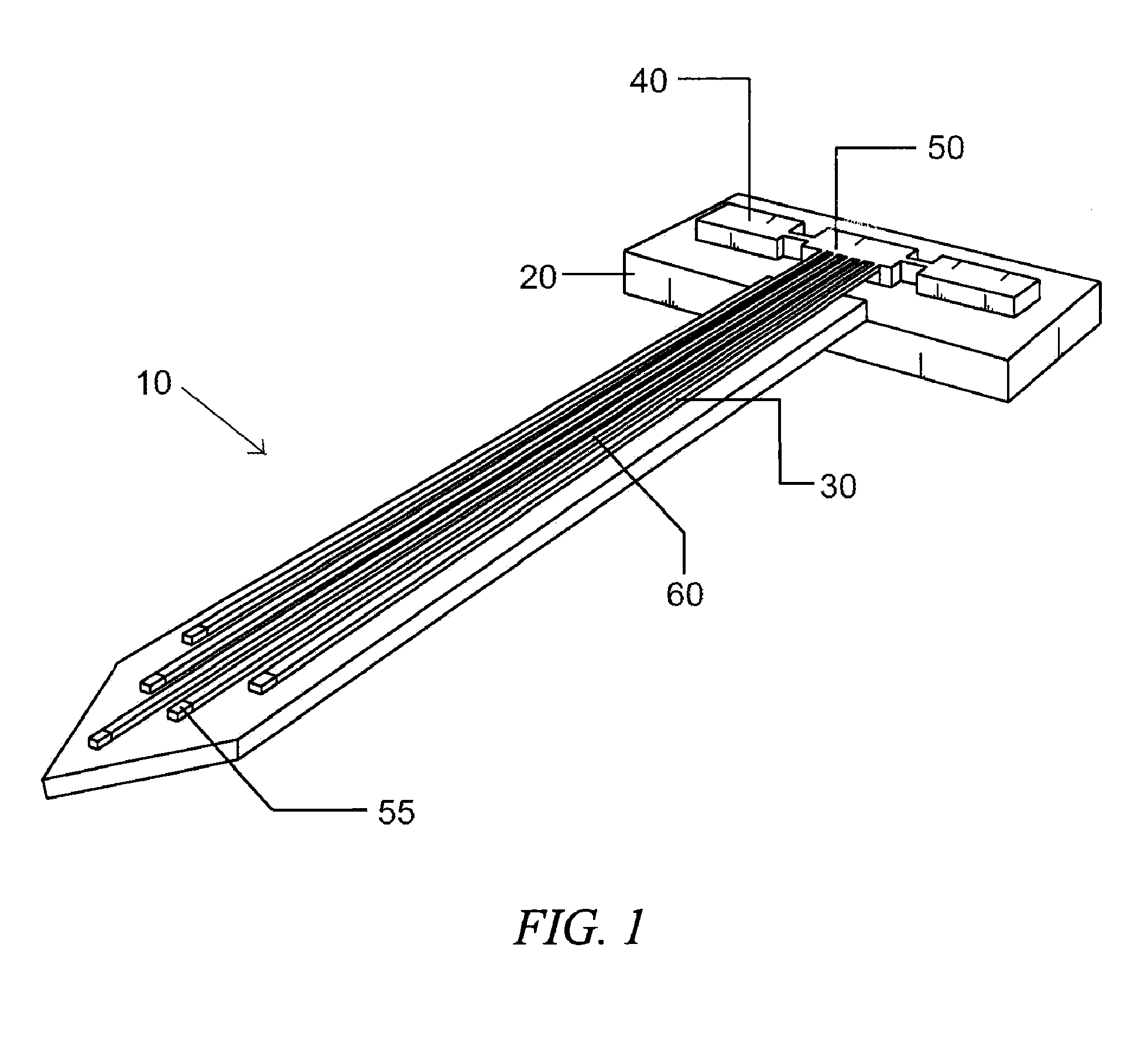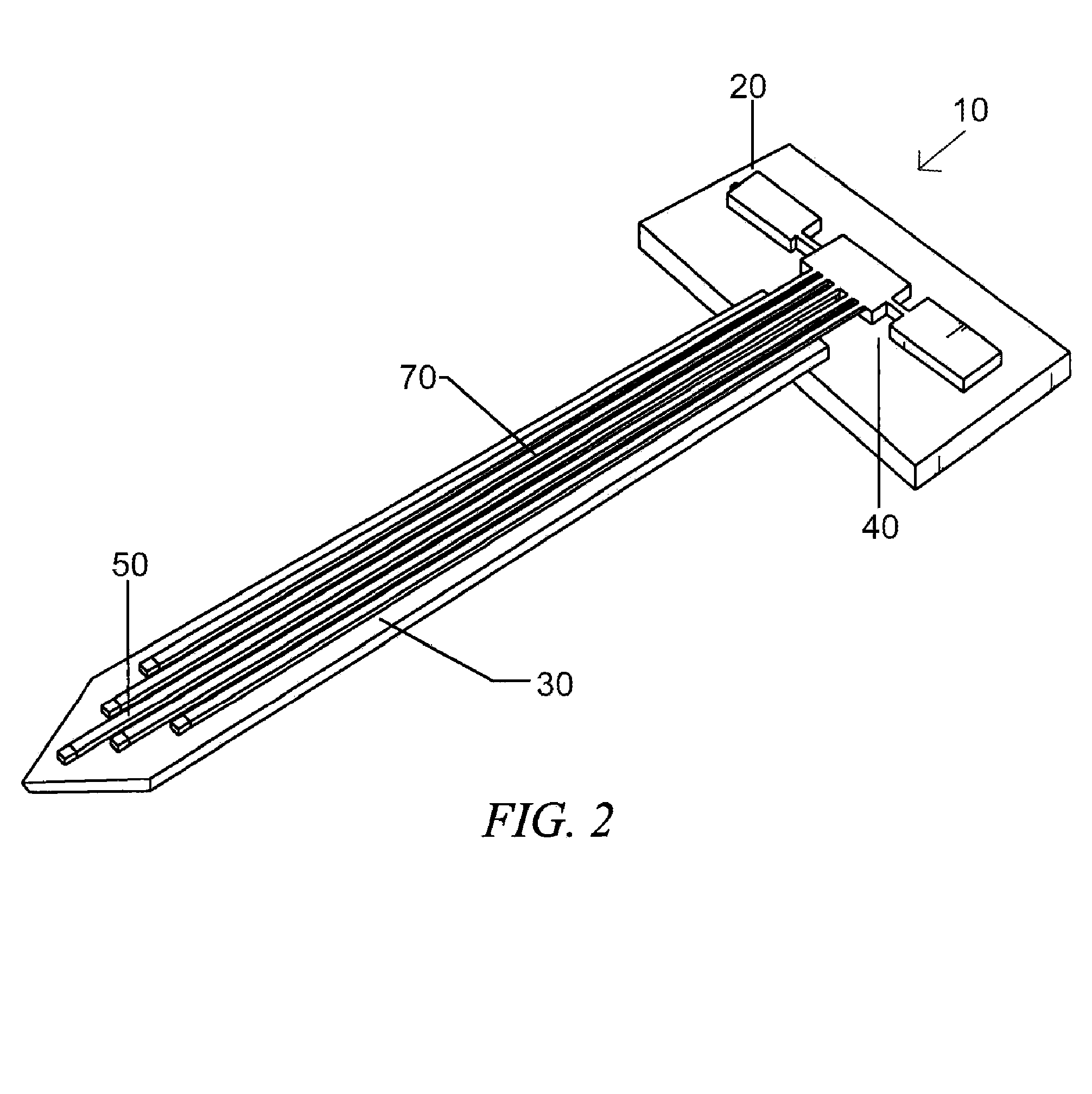Optical neuron stimulation prosthetic using silicon carbide
a technology of optical neuron stimulation and silicon carbide, which is applied in the direction of manufacturing tools, surgery, therapy, etc., can solve the problems of degrading neural prosthetics in-vivo, unable to meet the needs of patients,
- Summary
- Abstract
- Description
- Claims
- Application Information
AI Technical Summary
Benefits of technology
Problems solved by technology
Method used
Image
Examples
Embodiment Construction
[0026]In the following detailed description of preferred embodiments, reference is made to the accompanying drawings, which form a part hereof, and within which are shown by way of illustration specific embodiments by which the invention may be practiced. It is to be understood that other embodiments may be utilized and structural changes may be made without departing from the scope of the invention.
[0027]As used herein, the term “dura” refers to the fibrous covering over the brain and inside the skull.
[0028]As used herein, the term “shank” refers to the long thin SiC structure on the device that pierces the dura and makes intimate contact with the neural tissue.
[0029]As used herein, the term “support” refers to the top region of the prosthetic that remains outside the dura and contains the majority of the prosthetic's electrical subsystems.
[0030]As used herein, the term “ASIC” refers to an Application Specific Integrated Circuit. ASIC is the general purpose processer used on the de...
PUM
| Property | Measurement | Unit |
|---|---|---|
| Action potential | aaaaa | aaaaa |
| Flexibility | aaaaa | aaaaa |
| Transparency | aaaaa | aaaaa |
Abstract
Description
Claims
Application Information
 Login to View More
Login to View More - R&D
- Intellectual Property
- Life Sciences
- Materials
- Tech Scout
- Unparalleled Data Quality
- Higher Quality Content
- 60% Fewer Hallucinations
Browse by: Latest US Patents, China's latest patents, Technical Efficacy Thesaurus, Application Domain, Technology Topic, Popular Technical Reports.
© 2025 PatSnap. All rights reserved.Legal|Privacy policy|Modern Slavery Act Transparency Statement|Sitemap|About US| Contact US: help@patsnap.com



